Four days into renewed fighting between Armenian and Azerbaijani forces over the separatist Nagorno-Karabakh region, peace still appears a distant target. Reports about casualties are incomplete, but dozens of civilians and soldiers appear to have been killed or injured on both sides.
The violence is the worst since April 2016, when four days of fighting led to scores of estimated casualties on both sides.
All sides are distributing contradictory information about the consequences of the fighting, which began on the morning of September 27.
The most controversial difference is a claim by Armenia and Russian media outlets that Azerbaijani ally Turkey has dispatched Syrian mercenaries to Azerbaijan to assist the Azerbaijani armed forces. Yerevan, which earlier claimed that a Turkish F-16 shot down an Armenian military aircraft, now alleges that Turkey, a NATO member, has taken over command of Azerbaijan’s military aviation in the Karabakh operation. Turkey has categorically denied these claims as disinformation.
Azerbaijan alleges that it has regained control over several villages in the Armenian-occupied Fizuli and Jabrayil regions, which adjoin Karabakh. It also claims that it has seized strategic overlooks held by Armenian forces.
Armenia and the de facto government of Nagorno-Karabakh, a predominantly ethnic Armenian territory, have not confirmed these losses. They allege, however, that their allied forces have destroyed Azerbaijani helicopters, and that a plane and a helicopter crashed in nearby Iranian territory – claims also rejected by Azerbaijan.
Both Armenia and Azerbaijan, as well as Nagorno-Karabakh, have declared martial law and mobilization of their military forces.
Despite repeated appeals by the international community for a return to peace, neither side has shown a willingness to return to negotiations about the region and seven other adjoining Azerbaijani districts occupied by ethnic Armenian forces.
“The Armenian prime minister publicly declares that Karabakh is [part of] Armenia, period,” Azerbaijani President Ilham Aliyev commented to Russian state TV Rossia-1, the Associated Press reported on September 30. “In this case, what kind of negotiating process can we talk about?”
Armenian Prime Minister Nikol Pashinian, in turn, told Rossia-1 that Yerevan would not consider negotiations without an end to Azerbaijani attacks on Nagorno-Karabakh and Armenia. “We all perceive this as an existential threat to our nation, we basically perceive it as a war that was declared to the Armenian people, and our people are now simply forced to use the right for self-defense.”
On September 27, Pashinian stated that Yerevan is now considering officially recognizing Karabakh’s independence – a recognition that already exists in all but name.
The territorial dispute between Armenia and Azerbaijan over the separatist Nagorno-Karabakh region, recognized internationally as part of Azerbaijan, has lasted since the late 1980s. In September 1991, the region’s predominantly ethnic Armenian population declared independence from the then Soviet republic of Azerbaijan and the formation of a “Nagorno-Karabakh Republic.”
Some 30,000 people died in the conflict over Karabakh between 1988, when sporadic violence against ethnic Armenian and Azerbaijani populations began, and 1994, when a cease-fire was signed. Over 1.2 million people became refugees or Internally Displaced Persons, according to UNHCR, the United Nations refugee agency.
Peace-agreement talks chaired by the Organization for Security and Cooperation in Europe’s Minsk Group (France, Russia, and the United States) have lasted for more than 25 years with diminishing signs of progress.
In 1993, the United Nations adopted four resolutions that demanded the withdrawal of Armenian troops from Karabakh and stressed residents’ right of return to their homes in Armenian-occupied areas.
Four Days Of Fighting In Nagorno-Karabakh Wreak Devastation: A Photo Report
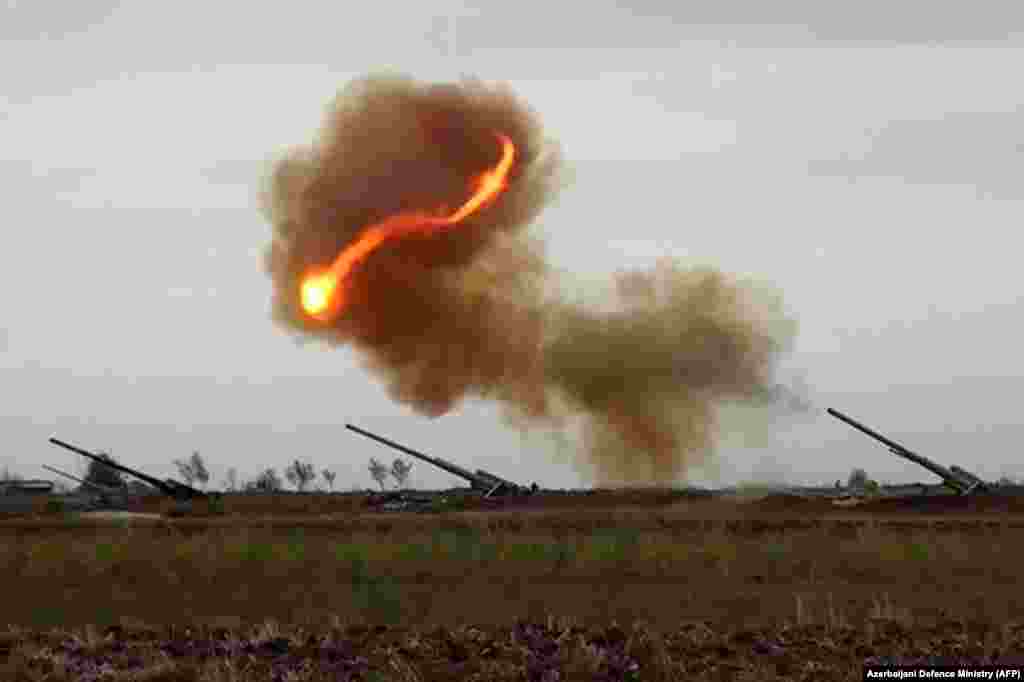
1
On September 28, 2020, the Azerbaijani Defense Ministry posted a video that purported to show an Azerbaijani army artillery strike against the positions of ethnic Armenian separatists in the disputed region of Nagorno-Karabakh.
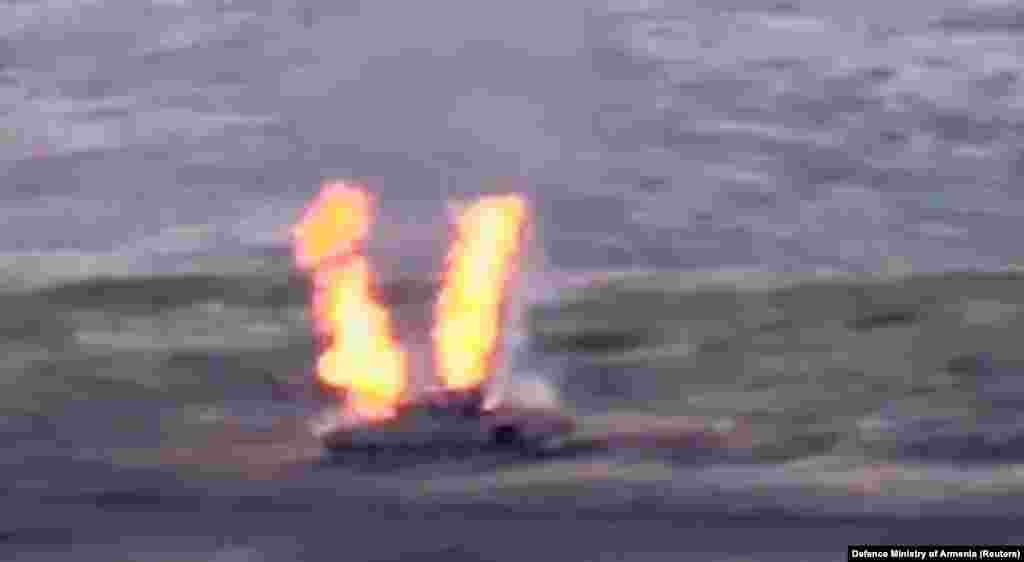
2
A frame from a video clip published by the Armenian Defense Ministry reportedly shows an Azerbaijani armored personnel carrier destroyed by Armenian armed forces.
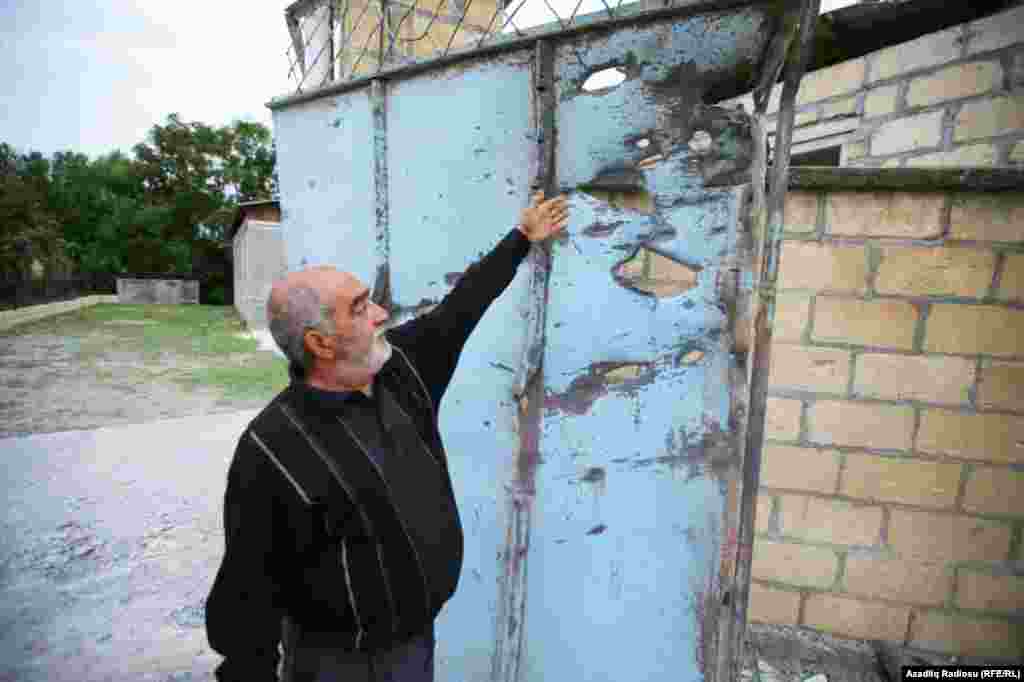
3
A resident of the Azerbaijani town of Tartar, roughly 52 kilometers north of Nagorno-Karabakh, shows holes in his house’s gates, damaged by shelling.
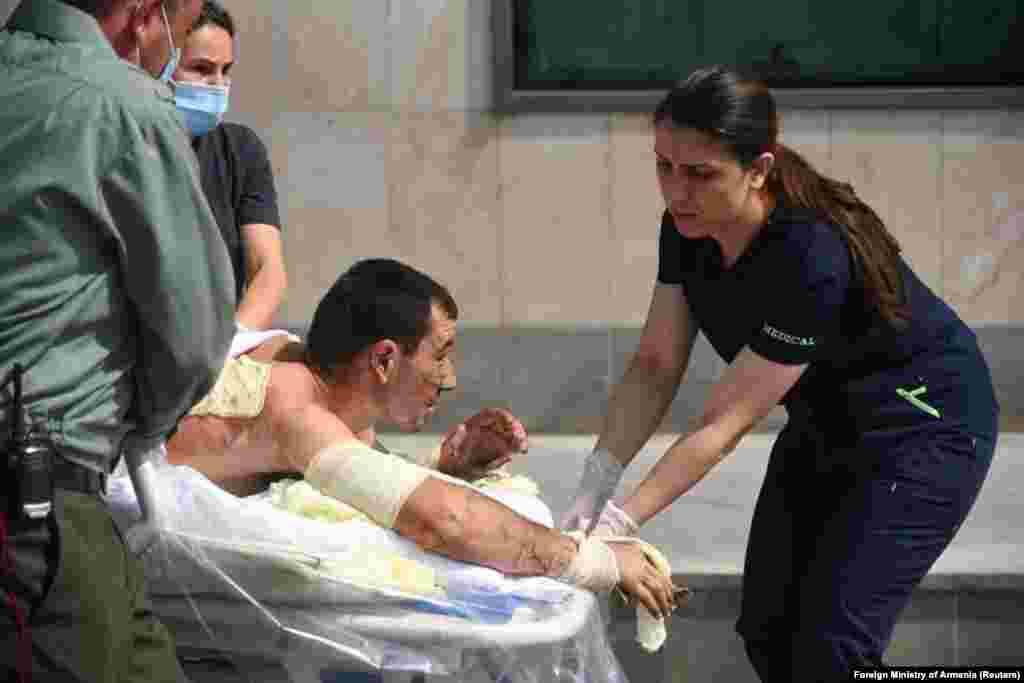
4
The Armenian Foreign Ministry published this photo in which medical workers assist a man said to be a citizen injured in the fighting with Azerbaijani forces.
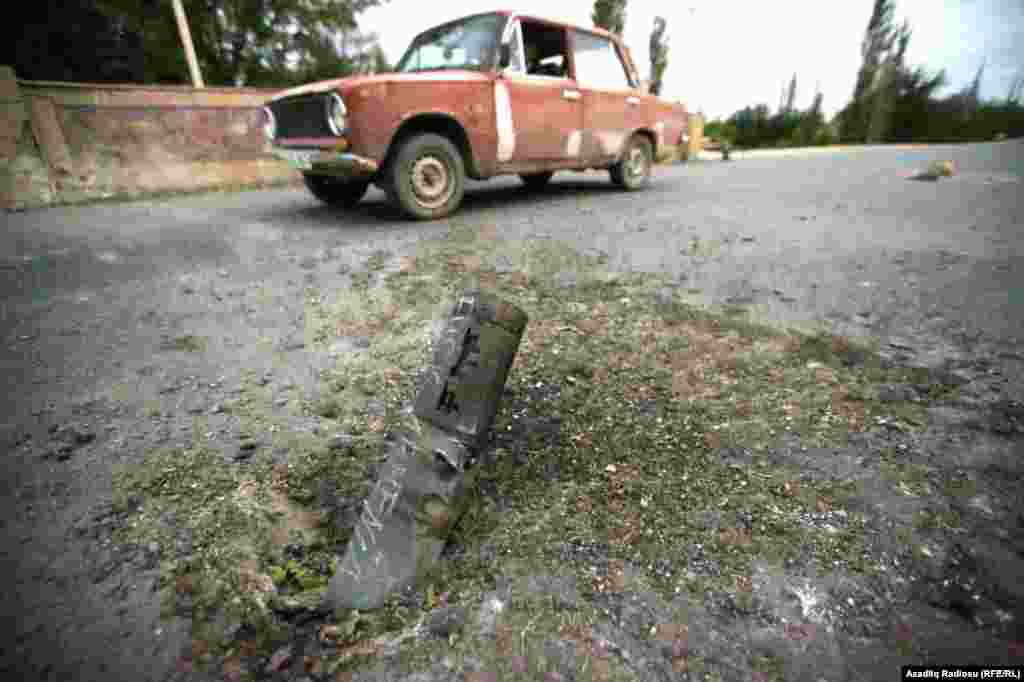
5
A shell-damaged road in the Azerbaijani town of Tartar, just north of Nagorno-Karabakh
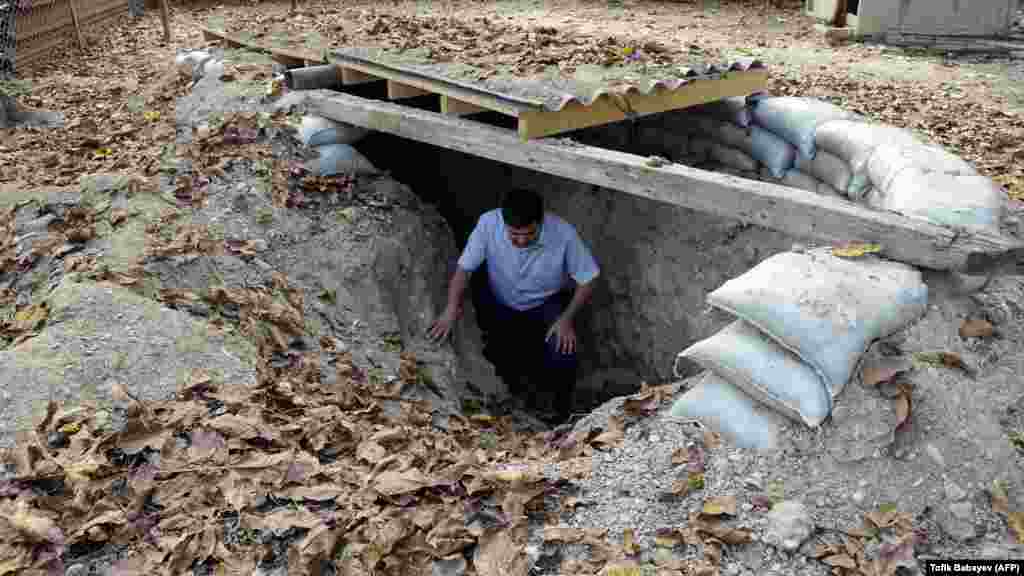
6
A resident of the Azerbaijani town of Tartar shows a self-made bomb shelter in the courtyard of his house.
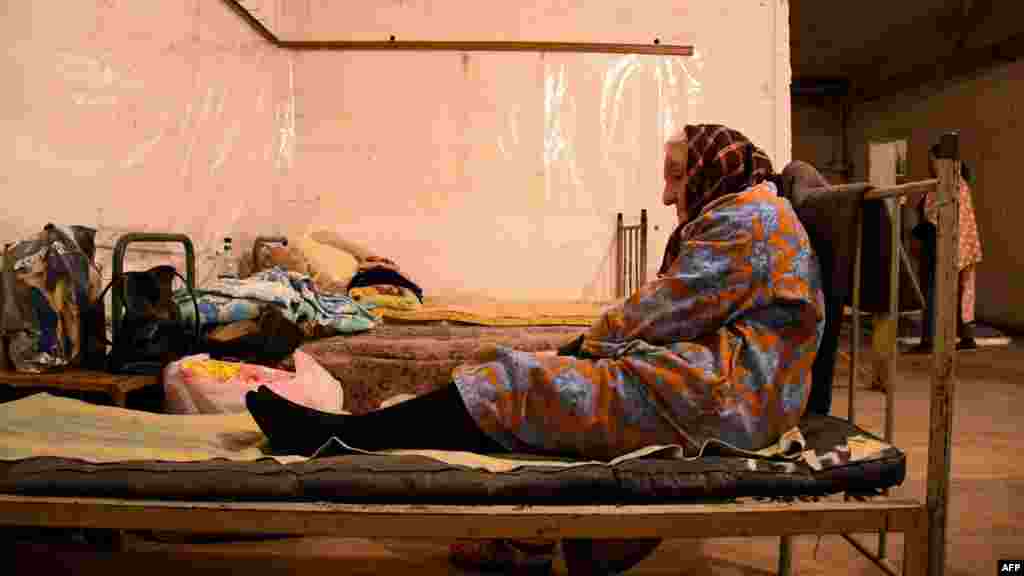
7
An elderly woman rests in a basement used as a bomb shelter in Stepanakert (called Khankendi in Azerbaijani), the main town in the disputed region of Nagorno-Karabakh.
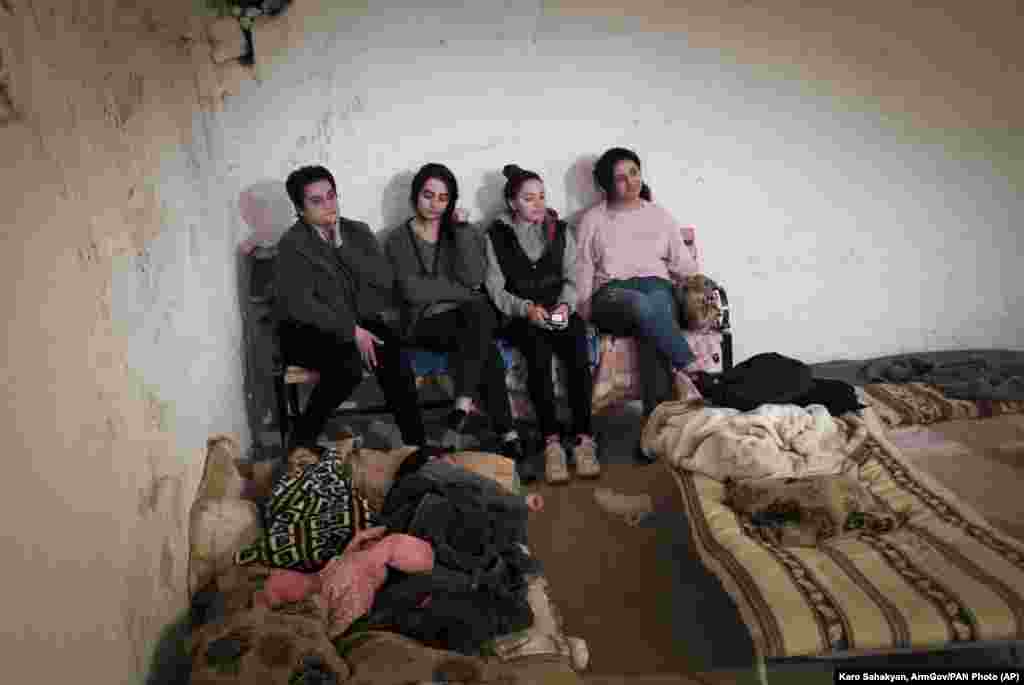
8
Ethnic Armenian women take shelter from gunfire in a bomb shelter in Stepanakert (Khankendi), the main town in the disputed region of Nagorno-Karabakh.
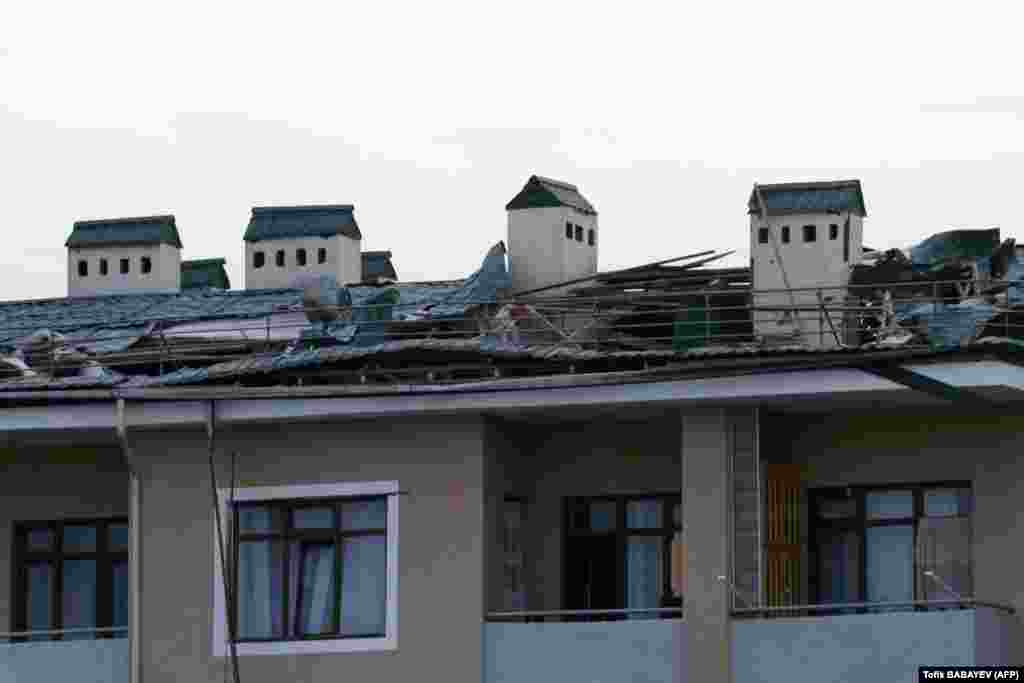
9
An apartment building damaged by shelling in the Azerbaijani town of Tartar, just north of Nagorno-Karabakh

10
Rubble from an attack on the Azerbaijani town of Tartar

11
A man stands amidst the rubble of his house in the town of Hadrut in the disputed region of Nagorno-Karabakh. His house was destroyed from shelling by Azerbaijani forces, he said.
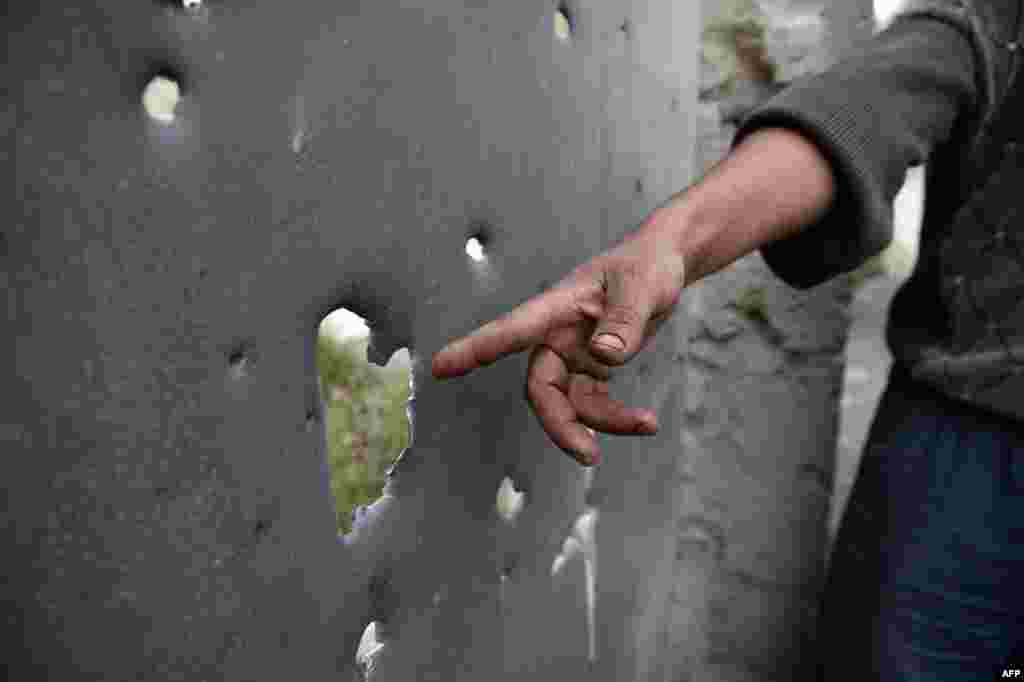
12
A resident of the Azerbaijani town of Tartar, north of Nagorno-Karabakh, shows apparent shell damage to another gate.
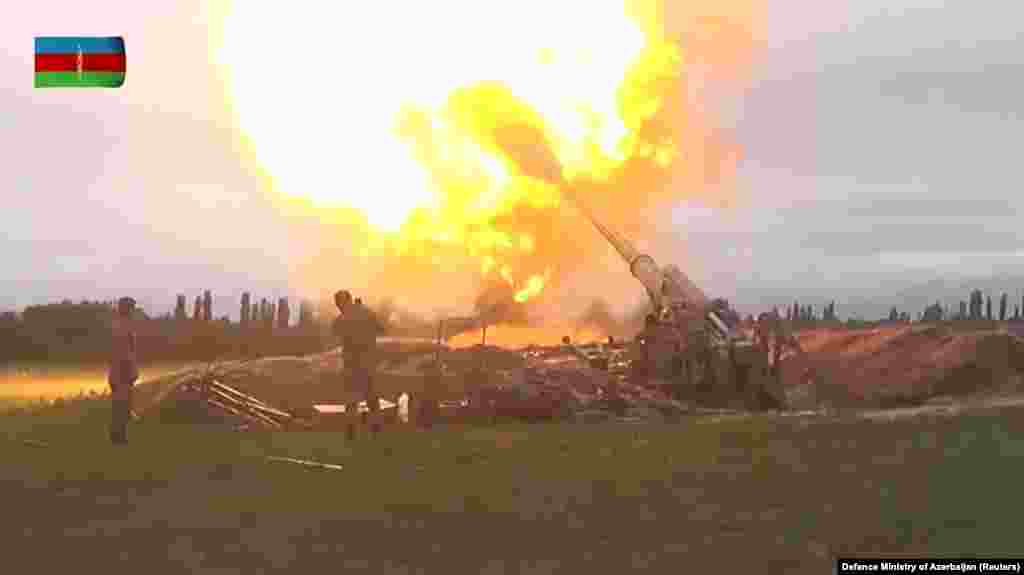
13
This frame from a video published by the Azerbaijani Defense Ministry shows soldiers firing artillery at Armenian and Karabakhi positions.

14
A man shows a kiosk damaged during shelling on the Azerbaijani town of Tartar.

15
A photo from the Armenian Foreign Ministry shows war damage at an unidentified location in Nagorno-Karabakh.
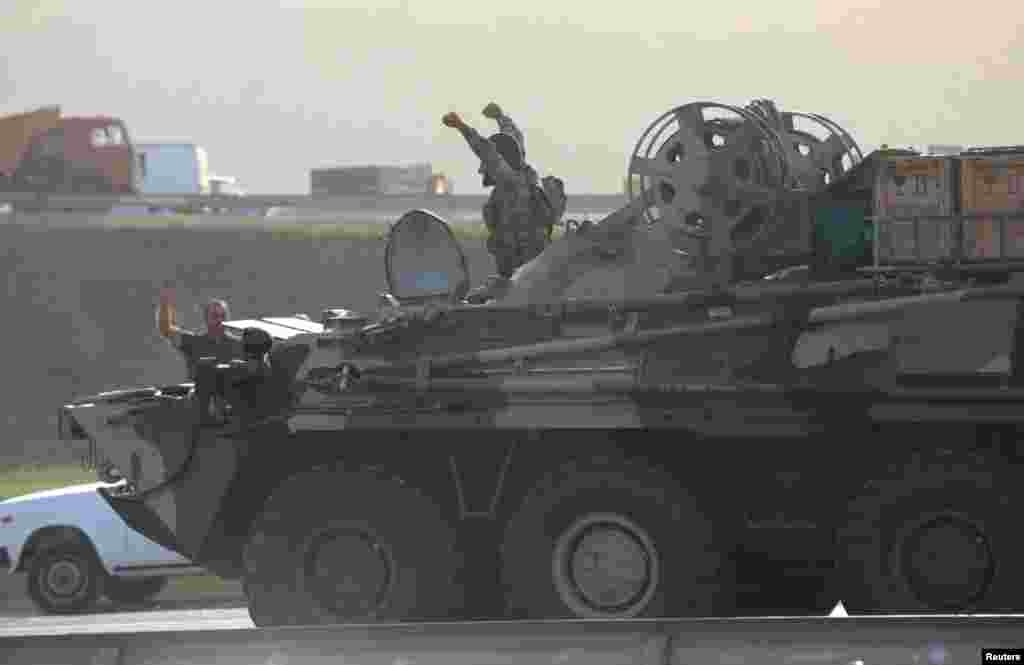
16
Raising their arms to signal victory, Azerbaijani soldiers ride in an armored personnel carrier in Baku, the Azerbaijani capital.
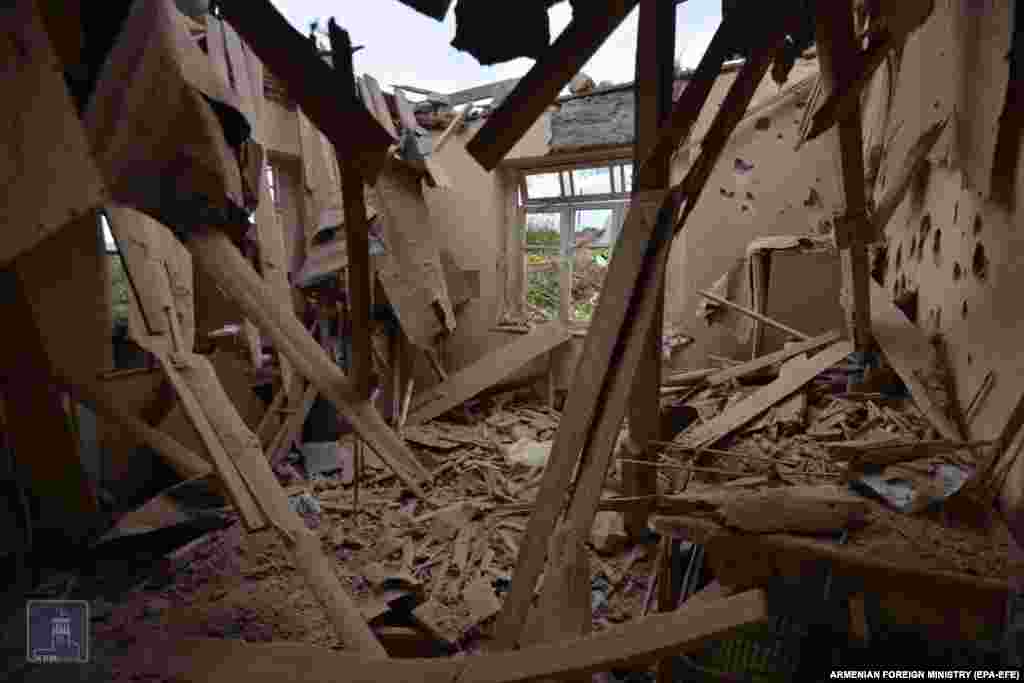
17
This photo published by the Armenian Foreign Ministry shows war damage at an unidentified location inside the disputed Nagorno-Karabakh region.

18
Alleged damage from Azerbaijani shelling in the Nagorno-Karabakh town of Martuni (called Khojavend by Azerbaijanis)

19
This photo from the Armenian Foreign Ministry shows damage likely caused by the renewed fighting between Armenian, Karbakhi, and Azerbaijani forces over Nagorno-Karabakh. The site of the photo was not identified.
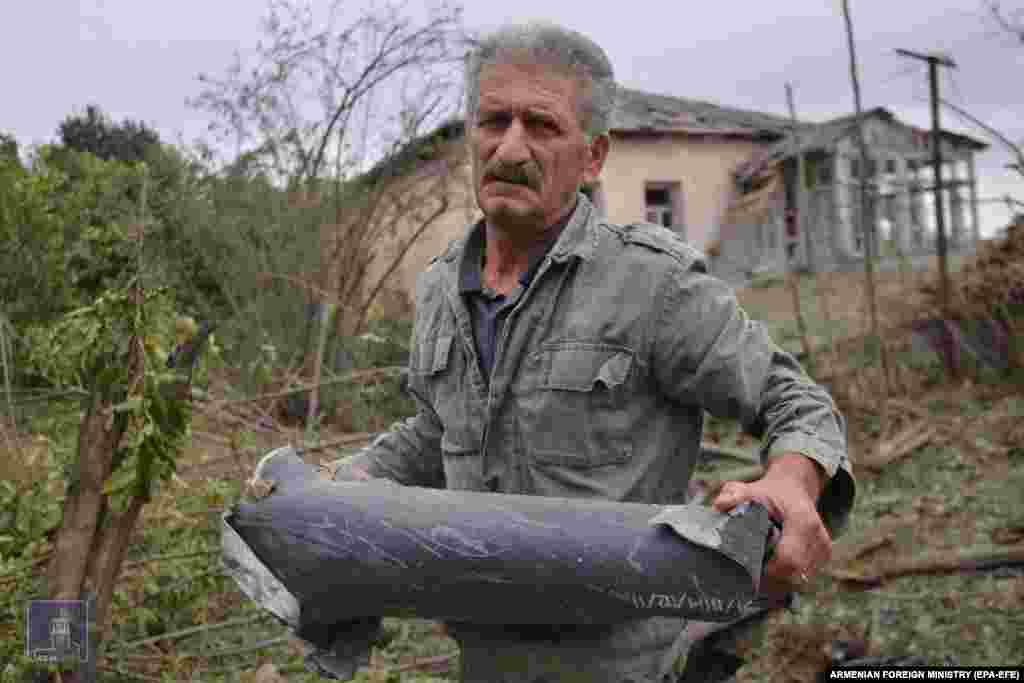
20
A man at an undisclosed location holds part of an artillery shell, fired during renewed fighting in September 2020 between Armenian, Karabakhi, and Azerbaijani forces over the Nagorno-Karabakh region. The photo was published by the Armenian Foreign Ministry.







Facebook Forum